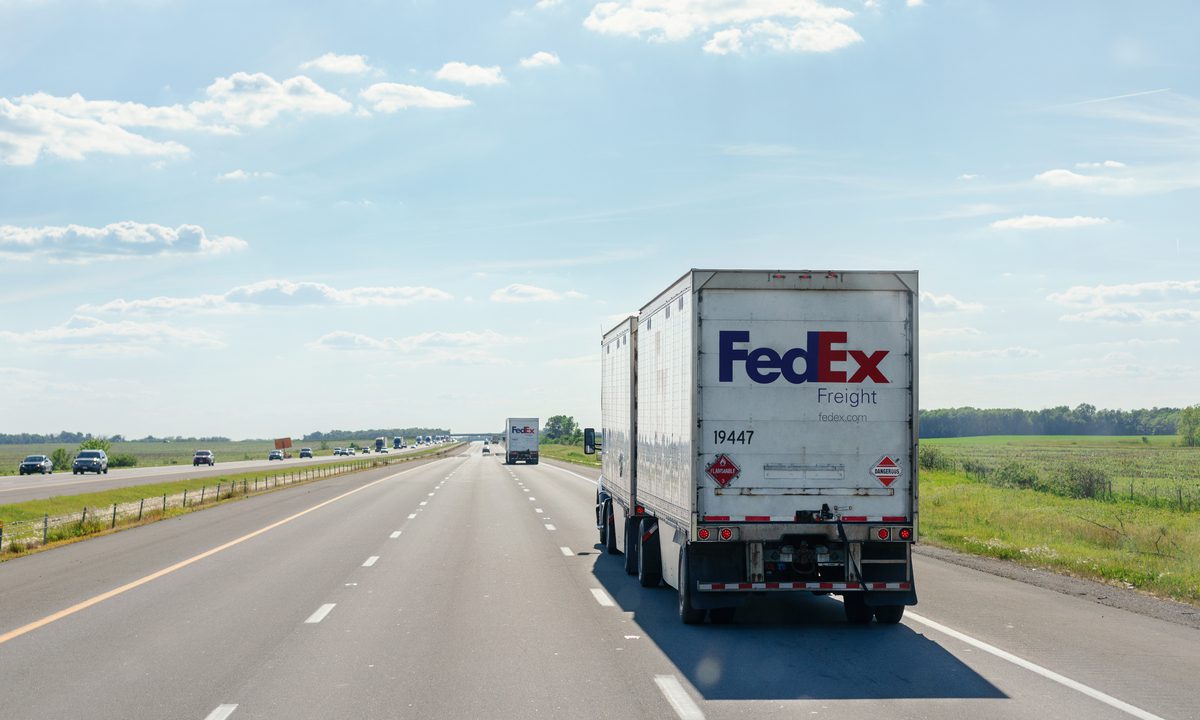FedEx Goods to be Hauled by Autonomous Big Rigs in Pilot Program

Driverless trucks have begun hauling freight this week down the I-45 between Dallas and Houston, marking the start of a two-year autonomous shipping pilot program that’s being called an industry first.
Although a safety driver will be on board during the initial testing period, the so-called “Class 8” big rigs will be driving themselves along the 500-mile trek between two of the nation’s largest cities.
The program is the result of a 3-way collaboration between autonomous vehicle developer Aurora, truck-maker Paccar and transportation and logistics giant FedEx.
“The speed and quality of progress we’re making with Aurora to develop self-driving trucks is impressive,” Paccar Chief Technology Officer John Rich said in a press release Wednesday (Sept 22) announcing the launch of the project. “This industry collaboration is an important step toward delivering these trucks at scale.”
As it stands, Paccar delivers hundreds of thousands of Class 8 trucks a year and FedEx delivers billions of packages annually, as consumer demand for fast-delivery of eCommerce purchases is reshaping the transportation industry.
Full Autonomy in Two Years
If all goes as planned, Aurora said that by the end of 2023, it would be able to haul loads autonomously between freight terminals without a safety driver.
“This is an exciting, industry-first collaboration that will work toward enhancing the logistics industry through safer, more efficient transportation of goods and we are pleased to collaborate with other industry leaders — Aurora and Paccar — on this endeavor,” Rebecca Yeung, vice president, advanced technology and innovation, FedEx Corporation, said in the statement.
See also: FedEx/Nuro Tie-Up Shows The Last Mile Belongs To Robots And Autonomous Vehicles
FedEx’s incentive for supporting this autonomous trucking venture was made clear earlier this week as the Memphis-based transportations giant reported fiscal first-quarter earnings that included a $450 million charge due to increased labor and transportation costs.
Read more: FedEx Takes $450M YoY Hit From Increased Labor, Transportation Costs
The Bring-it-to-Me Economy
To be sure, this trio is not alone in trying to make the driverless dream a money-saving reality as numerous others are vying for a similar piece of the prize, solving different problems along the supply chain. Among them is a recent announcement that Ford, self-driving technology company Argo AI and Walmart are collaborating on plans for a driverless delivery fleet in Miami; Washington, D.C., and Austin, Texas.
See also: Ford, Argo AI and Walmart Bringing Driverless Delivery to Miami, DC and Austin
There, the plan is that Walmart customers in parts of those cities will place orders online for groceries and other items for autonomous door-to-door delivery.
The demand for such deliveries is increasing with the growth of the bring-it-to-me economy. As PYMNTS reports in its study, The Bring-It-To-Me Economy, 94 percent of consumers have purchased from online marketplaces in the past year, and 31 percent of restaurant customers are more likely than they were in March 2020 to eat their food orders at home as opposed to in restaurants.
Read more: Ease, Convenience Drives Merchant Choice For 94 Pct Of Consumers
Whether it is final-mile deliveries, intrastate shipping or global freight liners plying the seas, a race is on to me the changing needs of consumers whose lifestyle and work habits have irreversibly changed during the pandemic’s shift to a digital-first economy.